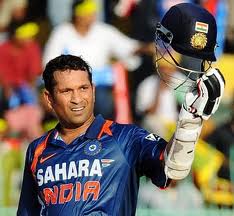Cricket Coaching and Skill Learning.
Laurie Ward of the ” Complete Cricketer Academy ” asks “Is Cricket Just Repetition? Is it just hitting balls and grooving actions ?
Laurie suggests not and goes on to discuss what there is beyond skill repetition and how it influences how we play.
Cricket is a “simple” game complicated by a myriad of variables: physical, technical, emotional, tactical and natural.
Good cricket coaching and instruction can help you to prioritise and sort out what to pay attention to and when.
In cricket every ball, wicket, match, day, situation, opposition, conditions and personal experience can vary tremendously.
So how can we prepare for something that can be so unpredictable?
 Players develop the technical and mental skills for the game over time and with experience through good cricket coaching and practice of repetitive skill sets and the grooving of individual techniques.
Players develop the technical and mental skills for the game over time and with experience through good cricket coaching and practice of repetitive skill sets and the grooving of individual techniques.
Famously, Sir Don Bradman practiced for hours hitting a golf ball with a stump against an uneven wall to develop his incredible hand-eye co-ordination.
Sachin Tendulkar is known to often spend hours on a bowling machine practicing individual shots after his team training session.
These two batting legends would have easily clocked up the 10,000 repetitions of an action required for a skill to be loaded into the subconscious mind, as described by Bob Woolmer in “The Art and Science of Cricket.”
However, Malcolm Gladwell in Outliers – The Story of Success -tells us that practice and grooving alone will not be sufficient to make you a great but it will increase your ability to perform those skills when required to do so.
Practice needs to be done correctly and with purpose and ideally under as close to match conditions as feasible. The best guidance, support and facilities will also improve your chances of success.
By repeating and grooving skills correctly, you prepare yourself to make the right response to an individual situation, have the correct muscle memory to perform the relevant patterns of movement and thesubconscious experience, confidence and belief to control decision making in a pressure situation.
Creating the subconscious ability to detect early signals and triggers to help you respond better and play accordingly is imperative to be a good cricketer.
So the answer is yes – we do repeat and groove to succeed. But there is a problem that comes with this method: Choking!
In “The Art of Failure”, Gladwell identifies subconscious learning through repetition as “implicit learning”.
This takes place outside of awareness, created by thousands of repetitions of an act, making it become natural, with feel and power developing from this.
Implicit behavior moves to, and is based, in a different part of the brain from normal coached or skill development learning, or “explicit learning.”
When under conditions of stress, the explicit system often kicks in.
A player will revert to the conscious mind and the original building blocks of learning a skill, thinking through actual movements and skills rather than play by feel using the subconscious skill sets developed.
Performance and movements are severely depleted and failure is almost inevitable – often referred to as choking and we all know many examples in all sports of this nasty occurrence.
So, you do need to hone your cricketing skills through repetition and grooving but you should also learn to control your emotional responses and reactions to perceived pressure situations by practicing and performing at the same intensity as much as possible.
Using Cricket Mental Training skills will equip you with the necessary skillset to deal with the situations presented on the cricket field.
Laurie Ward
The Complete Cricketer Academy
www.thecca.co.za
Back To Cricket Coaching
Back To Cricketlab

About Richard Pybus
I'm Richard Pybus, I've coached Pakistan, Bangladesh, Middlesex, Titans and the Cape Cobras in South Africa and the goal of this site is to help you to play winning cricket.
